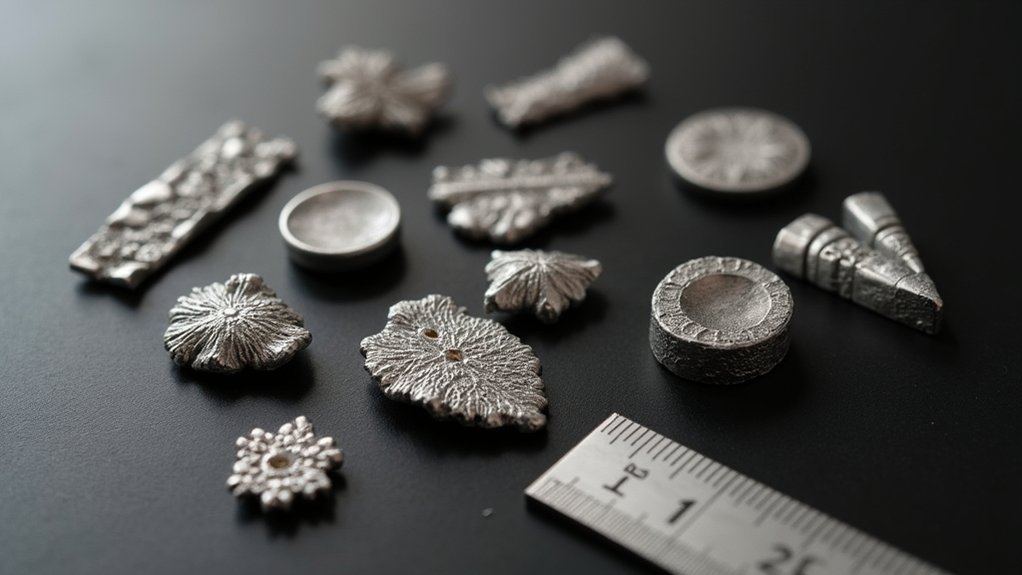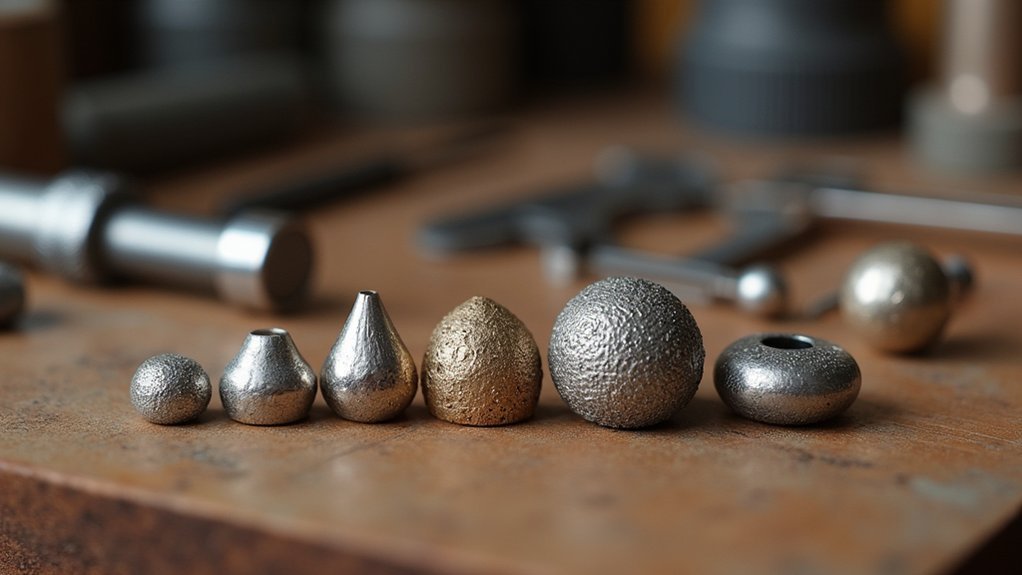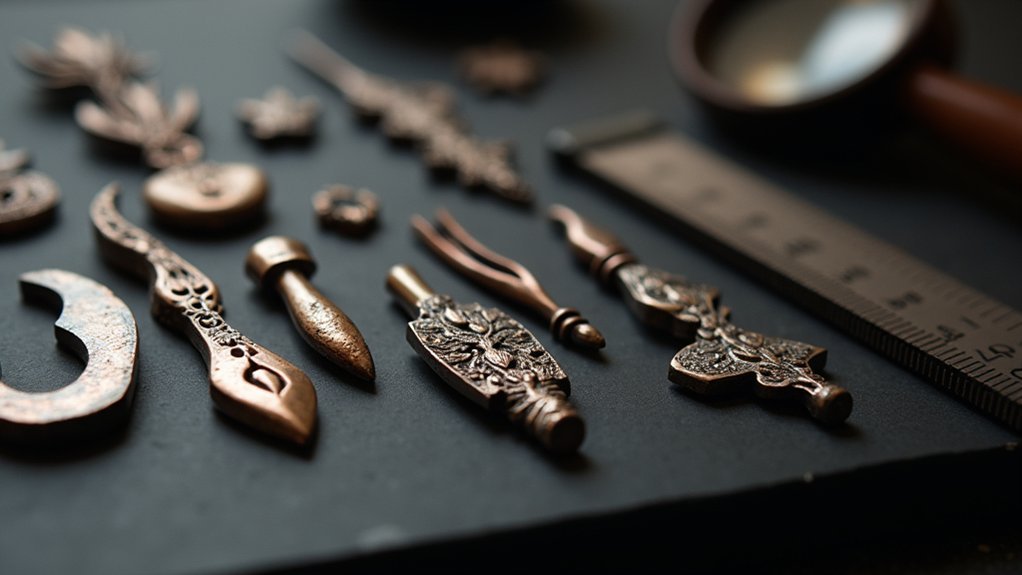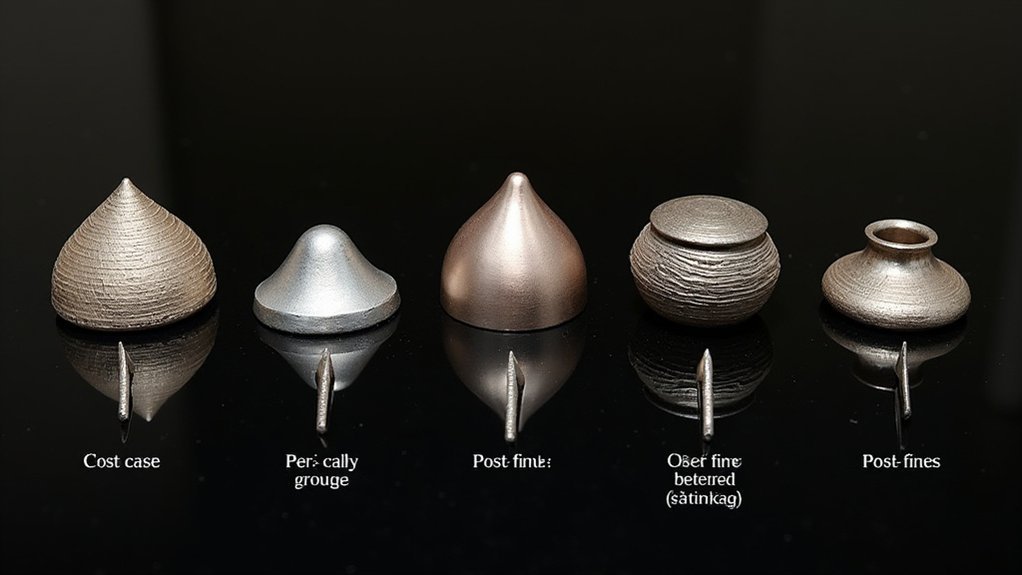You’ve probably experienced the frustration of firing your carefully crafted metal clay piece only to discover it’s markedly smaller than expected. Understanding shrinkage rates isn’t just helpful—it’s essential for creating pieces that fit properly and meet your design specifications. Different metal clay formulations shrink at vastly different rates, and choosing the wrong type can mean the difference between a perfect piece and a costly mistake that forces you to start over.
Understanding Standard Silver Clay Shrinkage Percentages

When you’re working with silver clay, you’ll encounter shrinkage rates that typically range from 10% to 22%, depending on the specific type you choose. This percentage represents how much your piece will reduce in size from its unfired state to the final fired piece.
Fine silver metal clay generally shrinks less than sterling silver clay due to differences in alloy composition. You’ll find that sterling silver clay experiences higher shrinkage because of its additional metals.
The shrinkage rate directly affects your design’s final dimensions, so you must factor this into your planning process.
Account for shrinkage when planning your silver clay design to ensure your finished piece meets the intended dimensions.
Each brand’s packaging includes specific shrinkage percentages for their products. Always consult this information before starting your project to guarantee accurate sizing and proper fit for any components you’ll add later.
Low-Shrinkage Metal Clay Options for Precision Work
For precision work requiring exact measurements and fine details, low-shrinkage metal clays offer a superior alternative to standard formulations.
These specialized clays typically feature shrinkage rates between 5% to 10%, markedly reducing dimensional changes during firing. You’ll find options like Art Clay Silver 650 particularly valuable when creating pieces that must fit specific components like stones or mechanical elements.
When selecting low-shrinkage metal clays, check the packaging for exact shrinkage percentages provided by manufacturers. This information helps you calculate your finished size more accurately and avoid costly mistakes.
You’ll appreciate the consistency these clays provide, especially when replicating designs that require precise measurements. For jewelry makers working with intricate details or fitted elements, low-shrinkage formulations eliminate much of the guesswork involved in compensating for dimensional changes.
High-Shrinkage Clays and Their Applications

While low-shrinkage clays excel at precision work, high-shrinkage metal clays serve different creative purposes with their dramatic 20% to 30% dimensional changes during firing. These metal clays enhance intricate jewelry designs and sculptural pieces where shrinkage improves overall appearance.
| Application | Advantage | Consideration |
|---|---|---|
| Detailed jewelry | Enhanced crisp details | Calculate 20-30% size reduction |
| Sculptural work | Improved proportions | Test fire samples first |
| Snug-fitting components | Perfect custom fits | Plan for altered dimensions |
| Intricate textures | Sharpened surface details | Account for thickness changes |
You’ll need precise calculations when designing your clay piece, as significant dimensional changes affect final proportions. Conduct test firings to understand your specific high-shrinkage clay’s characteristics. These clays work best when you’re creating components requiring tight fits with other elements.
Calculating Required Clay Size Before Firing
Since successful metal clay projects depend on precise final dimensions, you’ll need to master reverse calculations that determine your starting clay size.
When calculating the required clay dimensions before firing, divide your desired final size by the percentage remaining after shrinkage. For instance, if you want a 10cm finished piece and your clay has 10% shrinkage, calculate 10cm ÷ 90% = 11.1cm of unfired clay.
Remember that shrinkage rates vary considerably between clay types, ranging from 10-22%. You must know your specific clay’s shrinkage rate to avoid miscalculations that result in poorly fitting components.
Use calculators or spreadsheets to streamline this process and guarantee accuracy across different projects and clay varieties.
Factors That Influence Metal Clay Shrinkage Rates

Understanding your clay’s shrinkage rate is only half the equation—you must also recognize the variables that cause these rates to fluctuate.
Your specific clay’s composition directly affects metal clay shrinkage, as different brands contain varying amounts of organic binder that burns away during firing.
Different metal clay brands shrink at varying rates due to their unique organic binder compositions that burn off during firing.
The firing method you choose matters greatly—torch firing creates uneven heat distribution compared to kiln firing, leading to inconsistent shrinkage patterns.
Your piece’s thickness plays a vital role too; thicker sections shrink differently than thin ones.
Complex designs with varying wall thicknesses experience uneven shrinkage throughout the piece.
Even your firing temperature and duration influence the final shrinkage rate, making it essential to test each specific clay under your exact firing conditions.
Frequently Asked Questions
How Much Does Metal Clay Shrink?
You’ll see metal clay shrink between 10-22% during firing, depending on the type you’re using. If you’re working with 20% shrinkage clay, your 10cm piece becomes 8cm after firing.
What Is the Shrinkage Rate of Clay?
You’ll find clay shrinkage rates vary considerably depending on the type you’re using. Regular pottery clay typically shrinks 12-15%, while metal clays can shrink anywhere from 10-30% during firing.
What Clay Shrinks the Most?
You’ll find Project X clay shrinks the most at 22%, surpassing typical metal clays that shrink 10-20%. High-fire specialty clays also exhibit greater shrinkage than standard formulations.
Does Precious Metal Clay Shrink When Fired?
Yes, you’ll see precious metal clay shrink during firing as organic binders burn away, leaving pure metal. You can expect 10-20% shrinkage typically, so you must size your pieces larger before firing.
In Summary
You’ll achieve better results when you understand your clay’s shrinkage rate and plan accordingly. Whether you’re using low-shrinkage options like Art Clay Silver 650 for detailed work or high-shrinkage clays for enhanced definition, always check the manufacturer’s specifications. Don’t forget to calculate your initial size carefully and consider factors like clay thickness and firing temperature. With proper preparation, you’ll consistently create pieces that match your intended dimensions.





Leave a Reply